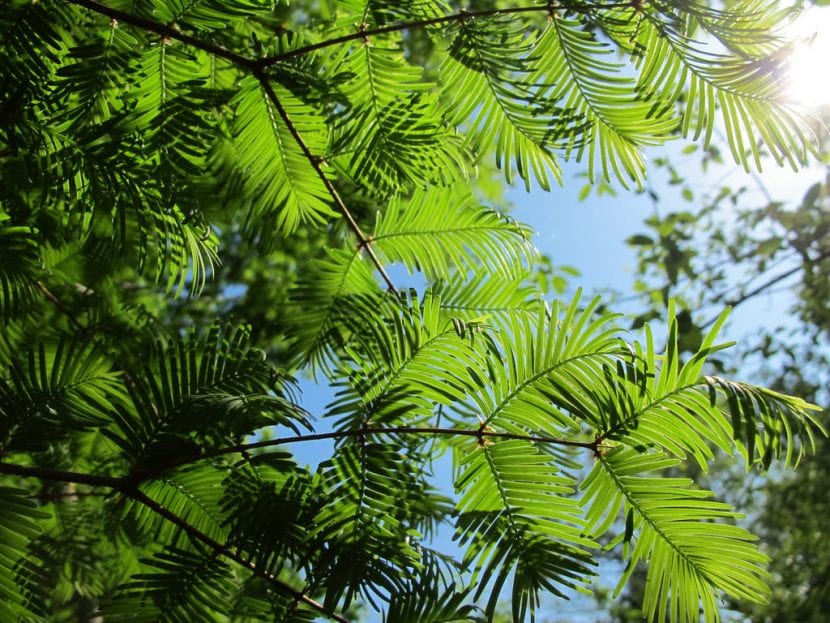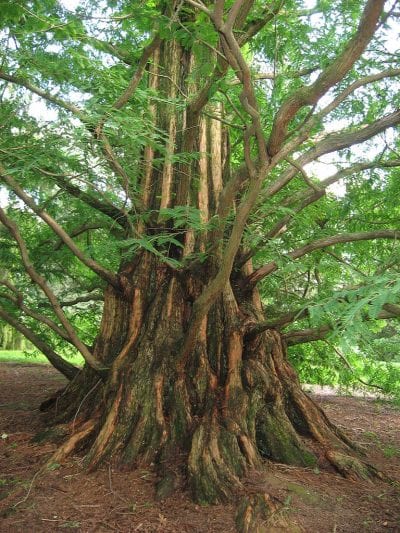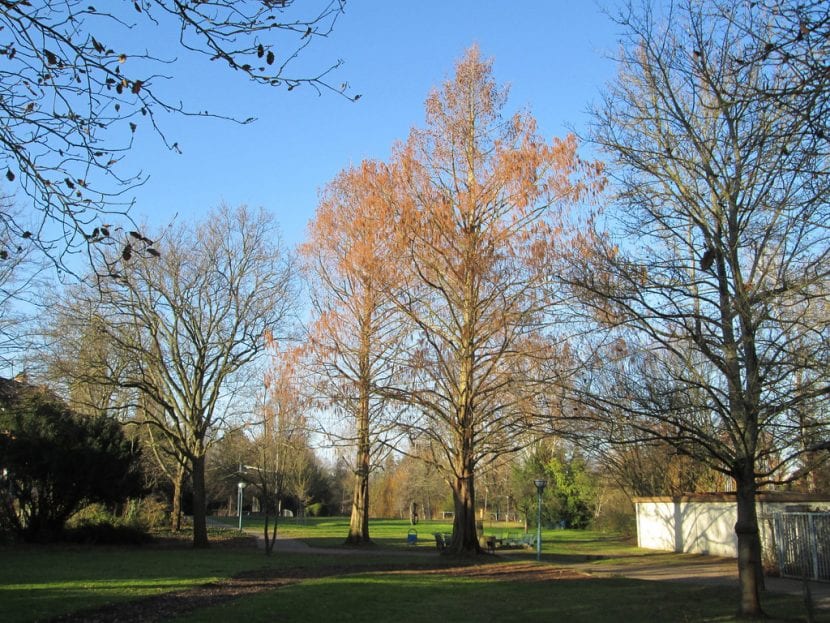
Image - Flickr / Kristine Paulus
La Metasequoia glyptostroboides it is a very tall conifer, ideal for large gardens where it can develop freely, thus allowing the viewer to contemplate it in all its splendor.
Its maintenance is not very complicated, although it must be borne in mind that he likes temperate climates, even somewhat cool.
Origin and characteristics

It is a fast-growing conifer popularly known as metasequoia or metasecoya. Originally from the Chinese provinces of Sichuan and Hubei, can reach a height of about 50 meters, with a trunk diameter of up to 2m.
The leaves are deciduous, bright green except in autumn when they turn reddish-brown before falling. The cones are globose to ovoid, and measure 15 to 25mm in diameter. These are arranged in opposite pairs, and mature 8 or 9 months after pollination.
What are their cares?
If you want to have a copy of Metasequoia glyptostroboides, we recommend that you provide the following care:
- Location: it must be outside, in full sun or in semi-shade.
- Earth:
- Garden: the soil must be fertile, well drained and slightly acidic.
- Pot: use substrate for acidic plants (for sale here), although keep in mind that it is not a tree that you can grow in a container throughout its life.
- Irrigation: moderate. You have to water about 4 or 5 times a week in summer, and about 2 times a week the rest of the year.
- Subscriber: in spring and summer, with ecological fertilizers.
- Multiplication: by seeds in winter, as they need to be cold before germinating.
- Planting time: in spring.
- Rusticity: resistant up to -18ºC.
Curiosities

Image - Flickr / anro0002
In closing, let me tell you something. This conifer is a tree considered a living fossil. Why? Because fossils have been found that show that about 55-56 million years ago, during the Paleocene-Eocene thermal maximum, it already existed. In fact, the genus Metasequoia had up to 20 species (and not just one like today, which is the one we have presented to you here) that lived throughout the Northern Hemisphere.
What did you think of Metasequoia glyptostroboides?